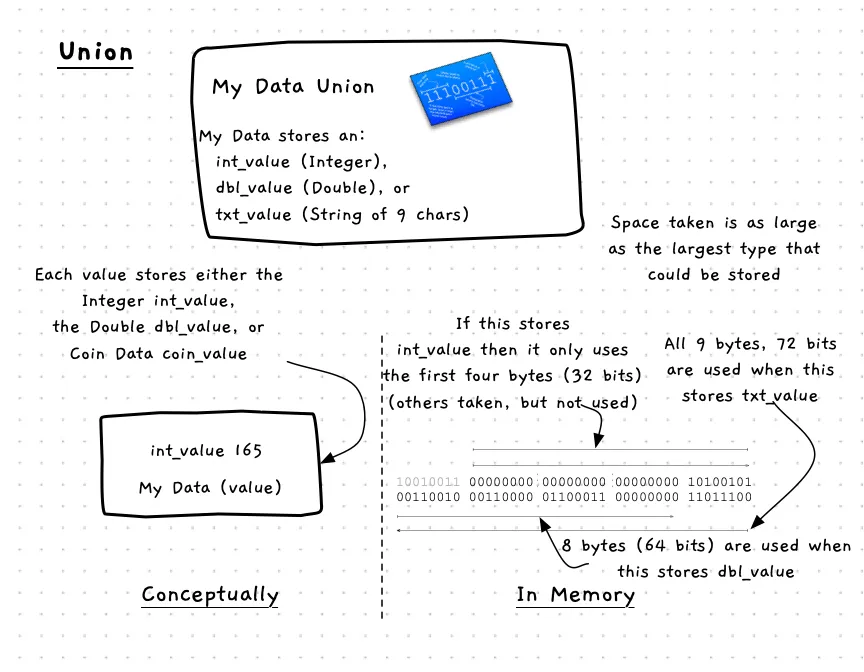Union
Structs and enums are by far the more common mechanism used for creating custom types. The union is rarely used, though it can add some interesting options if you do master it.
A union allows you to declare a type where the values may be one of a number of alternative types. For example, you can say a variable can store an integer, double or a warning level. The compiler will then make sure there is enough space to store the largest one of these, but you have to remember which type is actually stored there at any time.
A union works best when it is accompanied by a tag value. This value then records the kind of data currently being stored in the union variable. A good option is to use an enumeration for the tag’s type, giving you a range of value, that you can match to the range of types stored in the union. The union and its tag can then be coded in a struct, ensuring that you always have the necessary details, being the tag and the union’s value, together.

Union Why, When, and How
You will not often need a union. The only time you may want to use this is when you want to mix types within a location in your program. There are probably other ways you will be able to do this, but sometimes the union can be used. In these cases you should set up the union and an enum to track which kind of value is stored.
In C/C++
union my_union{ int int_value; double dbl_value; string str_value;};
enum data_tag{ INT_VALUE, DBL_VALUE, STR_VALUE};
struct data_value{ data_tag tag; union my_union value;};
int main(){ data_value val;
// use it to store an integer value val.tag = INT_VALUE; val.value = 10;
// use it to store a double value val.tag = DBL_VALUE; val.value = 3.14;
// use it to store a string value val.tag = STR_VALUE; val.value = "Hello World";
// Remember it only stores one value...}